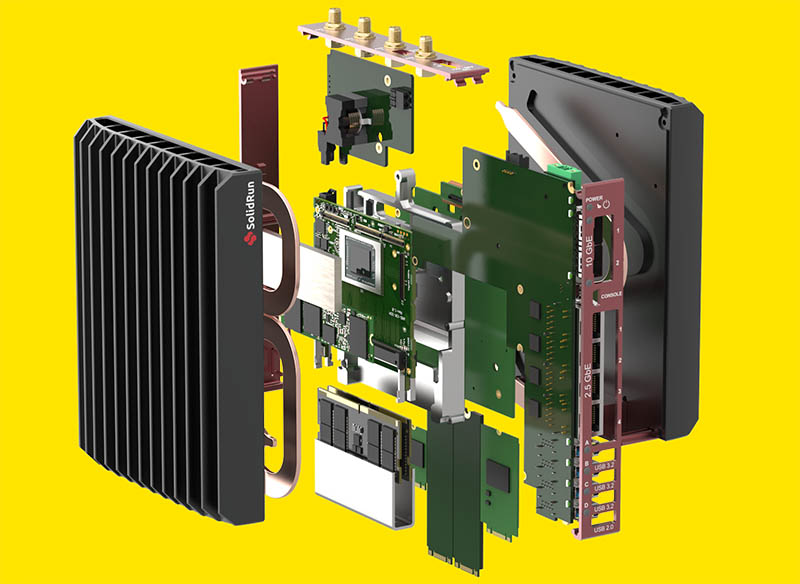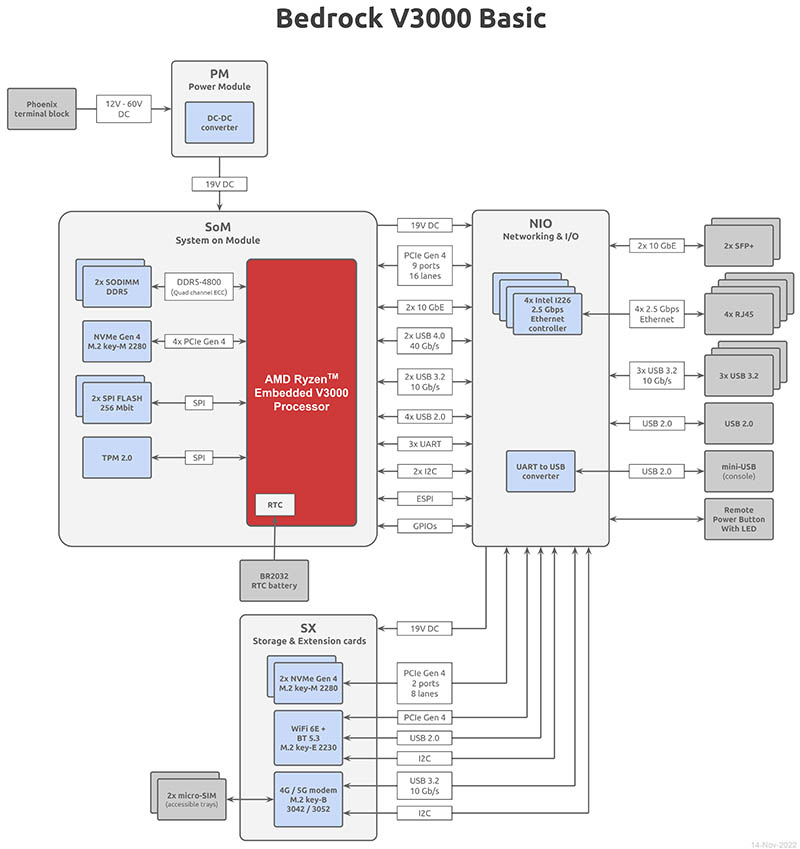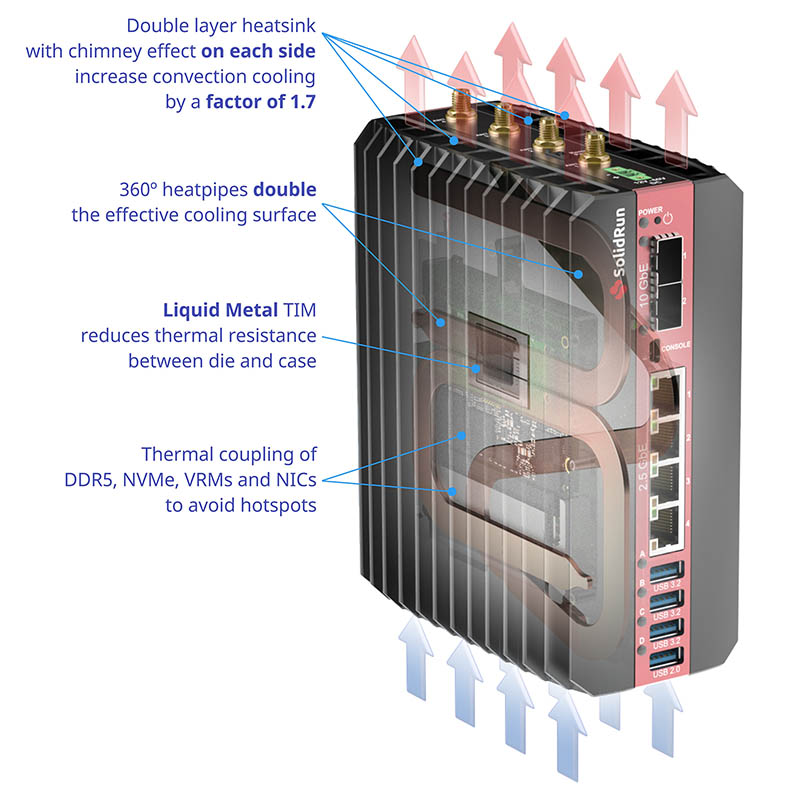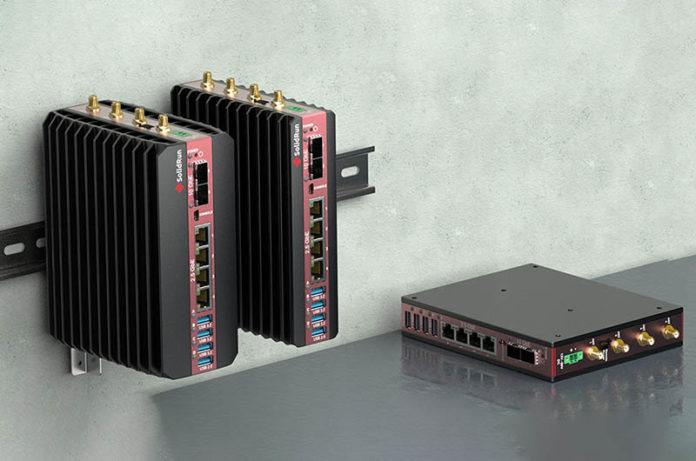Earlier this week, SolidRun reached out to STH letting us know that it would announce a new PC based on a chip we are very excited to see. The SolidRun Bedrock PC brings the AMD Ryzen V3000 series processor to different embedded form factors.
SolidRun Bedrock PC with the AMD Ryzen V3000 Series Coming
A few months ago we covered the quiet announcement of the AMD Ryzen Embedded V3000 series. We have been waiting for designs to come out since then. SolidRun has one of the earliest versions with the Bedrock PC designed for embedded markets.

The SolidRun Bedrock can have up to 8 cores/ 16 threads of Zen3+ AMD Ryzen V3000. The system also gets up to 64GB of DDR5 ECC or non-ECC memory. Storage is provided by M.2 with a primary and two expansion slots. There is onboard WiFi 6E via Intel AX210 WiFi. Inside is also a Quectel 4G/5G modem for WWAN. Networking is 4x Intel i226 NICs with two 10GbE SFP+ ports.

There are three different cooling options. A smaller 0.6L tile. Then there is a 0.9L 30W chassis and a larger 1.5L 60W model.

SolidRun is focusing a lot more on cooling these passive systems. This is certainly several levels above the inexpensive 2.5GbE boxes that we have seen this year.
Final Words
Of course, the big question many of our readers will have is whether we will review the new Bedrock PCs. The answer is: that is the plan. It sounds like SolidRun is still finishing up some of its internal testing. At the same time STH is going to be very busy for the next two months with the recent AMD EPYC 9004 “Genoa” launch and the 2023-01-10 Intel Sapphire Rapids Xeon launch, so we are hoping the systems are ready to review just after the main server cycle slows.





cool beans – these are ent sbc/minis – the mini/sbc trend will be one to wwatch if there can be some new arm chips in vol will be nice – with faster networks and nvme they could be ready for prime time node cluster duty – good content with red shirt jeff – do more of these and compare tflops for various configs on lower end – just for the fact that volume of these parts will exceed enterprise parts could be worth looking at more – smb sector and homelabbers will eat these up, pi 5 will be less of a factor but it is ok as they will spur on lots of copycats and maybe mkt sentiment could rebound a bit with more volume and clear arm consortium roadmaps
SFP+ cages? LTE? WiFi? Holy Handgrenades, this could be the perfect pfSense box as long as they don’t misfire on the pricing. With SFP+ onboard though, I fear for the sanity leaving the building.
@ foss_gen
These while cool from the market you described are more intended for industrial applications at the edge. Most of these will likely live out their lives in a din rail box next to other industrial stuff. With the: cpu and motherboard cost a few hundred, a few hundred for the chassis, add on the cost of nics and such, the engineering required for a relatively unique design, validation costs, plus the normal business market margin… these could end up costing easily 4 figures.
Please indicate whether the cpus in these small systems have Quick Assist Technology implemented in the processor. And for AMD, whatever is their version of same.